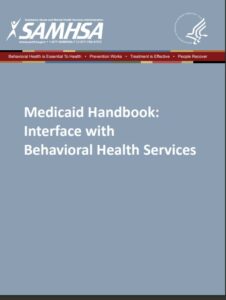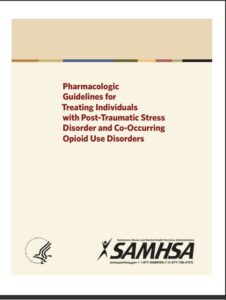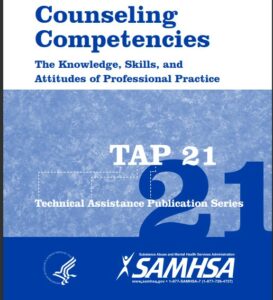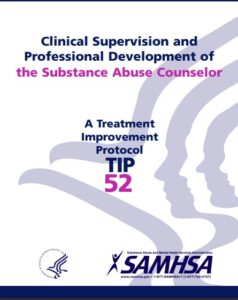RISK PERCEPTIONS & BEHAVIORAL INTENTIONS FOR HEPATITIS B
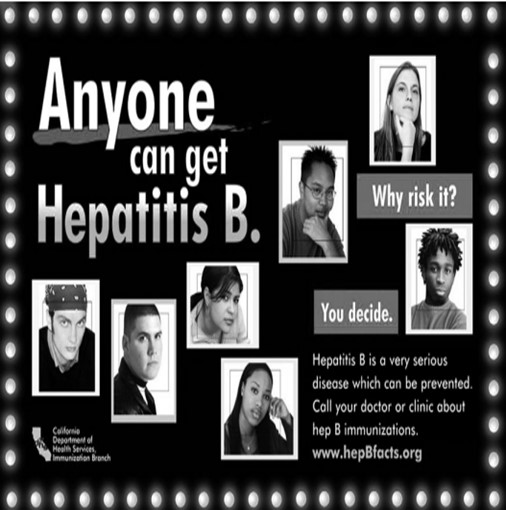
RISK PERCEPTIONS & BEHAVIORAL INTENTIONS FOR HEPATITIS B How Do Young Adults Fare?
Abstract
RISK PERCEPTIONS & BEHAVIORAL INTENTIONS FOR HEPATITIS B – How Do Young Adults Fare? Young adults are at risk for Hepatitis B infection. Little is known about their attitudes and beliefs concerning Hepatitis B, which are determinants of getting immunized.
This investigation examined risk perceptions and behavioral intentions concerning Hepatitis B among a convenience sample of 1070 young adults, 18–24 years old who participated in a Hepatitis B campaign that aired a prevention-based advertisement in movies.
The campaign did not produce any significant effects. Therefore, analyses presented in this paper explored whether risk perceptions and intentions vary by sociodemographic characteristics.
Most young adults do not perceive themselves to be at risk for Hepatitis B but perceive other people to be at risk. Gender and ethnic differences in behavioral intentions to seek out Hepatitis B information were also observed.
This study offers insight about important factors to consider when designing Hepatitis B prevention interventions for young adults and suggests that increasing health-promotion efforts for this group, while accounting for differences in age, culture and gender, are warranted.
Introduction
Hepatitis B mainly affects 20- to 50-year-olds, many of them young adults. In the United States, >1 million people are chronic carriers of Hepatitis B. Roughly 100 000–150 000 persons become acutely infected with the virus and 5000 die from its effects each year [1, 2]. Chronic Hepatitis B is associated with significant morbidity, including cirrhosis, liver cancer and liver failure [3].
Hepatitis B virus transmission is linked to infected bodily fluids [4, 5], associated with sexual behaviors, injection drug use [5], tattooing and body piercing [6, 7]. Since young adults often engage in these activities, rarely seek health care [8], are sexually active and perceive themselves to be at low risk for infectious disease [9], they are at heightened risk for Hepatitis B.
Efforts to reduce the incidence of Hepatitis B among young adults are limited, despite an effective vaccine. Immunization coverage for children and adolescents has increased since 1991 due to universal immunizations for newborns [10] and state laws (1997–2000) requiring immunizations for children entering day care, grade/middle school and state college [8, 11].
. Children born before 1992, now young adults, have low Hepatitis B immunization rates since they were not covered by these mandates. Adult immunization recommendations also overlook young adults by focusing on older adults identified at risk [4]. It is estimated that only 10–15% of 18- to 24-year-old Californians have received Hepatitis B vaccinations, which means many young adults are unprotected against Hepatitis B [10, 11, 17].
Few investigations have examined health beliefs associated with Hepatitis B among young adults.
Concepts of risk perception indicate that young person’s often misperceive true risks for disease [12] and have difficulty in understanding the effects of cumulative risk or the consequences of repeated exposures to risks overtime [13, 14]. Young person’s often rate their risk for disease lower than that of others, an optimistic bias tendency [13].
The Health Belief Model [15] posits that preventive behaviors are associated with health beliefs. How campaigns frame messages [16] also shape risk perceptions or health decisions. Prevention focused framing relies on individual differences for promoting effective behavior change [13, 16].
Hepatitis B campaign described emphasized preventive messages (i.e. Hepatitis B is preventable). These frameworks guided this investigation, which examined how Hepatitis B perceptions and intention’s varied by individual factors.
Methods
Evaluation of the Hepatitis B campaign initiated by the California Department of Health Services determined data collection. The 6-week campaign was implemented in movie theaters throughout 11 California counties in 2003. A repeated cross-sectional design was used for evaluation in two southern California counties, with an intervention (airing slide) and control (not airing slide) theater.
The slide was shown for 15 s, 16 min before the start of each movie. Message of the slide included: ‘Anyone can get Hepatitis B’, ‘Hepatitis B can be prevented’ and ‘get immunization information’ (see Figure 1).
READ MUCH MORE INSIDE…
DOWNLOAD “RISK PERCEPTIONS & BEHAVIORAL INTENTIONS FOR HEPATITIS B”

Our 100% Money Back Guarantee:

If for any reason you decided within 30 days that “RISK PERCEPTIONS & BEHAVIORAL INTENTIONS FOR HEPATITIS B” isn’t for you, simply notify us by email and we’ll gladly refund your money – no questions asked. That’s our Ironclad Guarantee!
The risk is entirely ours! You absolutely have nothing to lose!
Your name and email will Never be shared, sold, or given to anyone.
We keep our subscriber’s privacy sacred. We do not sell or rent your personal information to other parties. What’s more you can always unsubscribe at any time!
Regards, Coyalita
Behavioral Health Rehabilitative Specialist & Addiction Counselor
Copyright © 2021-2024 Thresholdlivecoyalita.com All Rights Reserved Privacy Policy – Earnings Disclaimer – Terms of Use – Contact Us

